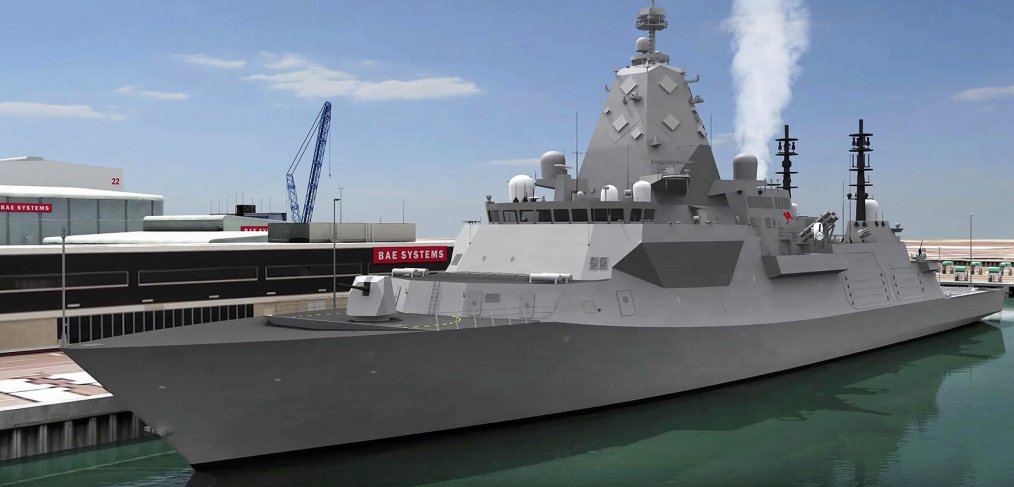The $35 billion SEA 5000 program is expected to deliver thousands of jobs and an unprecedented economic boost around the country, a report released by prime contractor BAE Systems Australia has revealed.
BAE Systems Australia's report shows that at its peak in 2028, the Hunter Class frigate program will contribute more than 6,300 jobs and just under $1 billion in gross domestic product (GDP) to the national economy.
This significant contribution is in addition to the important and ongoing impact of BAE Systems’ activities in Australia, which, the report shows, contributed $1.2 billion in 2017 through its work to support the Australian Defence Force at more than 25 major sites across the nation.
BAE Systems Australia chief executive Gabby Costigan said, "BAE Systems has for several decades played a critical role in ensuring the security and prosperity of Australia. We are pleased to release this report today demonstrating that BAE Systems’ involvement in the Hunter Class frigate program alone will more than double the company’s already significant contribution to the national economy."
The report, titled The economic impact of BAE Systems in Australia and produced by BIS Oxford Economics, shows that every job directly created on the Hunter Class program will have a multiplier effect of 2.7 in 2028.
Modelling estimates the Hunter Class program will contribute $17 billion to the national economy and over 6,300 full-time jobs will be generated across Australia at the program’s peak in 2028.
The program’s demand for a highly skilled workforce will also boost advanced technology skills and know-how in South Australia and nationwide.
"Australia’s defence industry plays an indispensable role in supporting the Commonwealth government as it adapts to our changing security environment and grows the capability needed to better protect the nation. As regional defence priorities have changed, we have supported the development of a stronger and more capable sovereign defence industry," Costigan explained.
The economic modelling shows that the program will also have wide-ranging effects on Australia’s GDP. The report estimates that BAE Systems’ involvement with the Hunter Class program will contribute a total of $17 billion to national GDP over the project lifetime (2018-19 to 2047-48).
Defence Minister Christopher Pyne said, "As well as the direct contributions to our national economy, the Hunter Class program will enhance technical knowledge in Australia’s naval shipbuilding enterprise."
Of this, some $7.1 billion will be contributed by BAE Systems direct activities, while the procurement chain will contribute an additional $4.4 billion.
The report highlighted the impact of BAE Systems on the Australian economy, including a number of key points, including:
- BAE Systems made a total contribution to Australian GDP worth almost $1.2 billion in 2017. The largest portion of this came from the company’s direct activity, worth $600 million.
- BAE Systems’ activities support a large supply chain in Australia, producing a significant amount of economic activity in a range of sectors. This activity amounted to an $230 million indirect contribution to GDP in 2017. It was driven by the company’s purchases of goods and services from Australian suppliers, which amounted to $330 million in 2017.
- BAE Systems’ activities in Australia in 2017 were responsible for supporting a total of 7,190 FTE jobs. Of this, 3,200 were supported internally across BAE Systems’ 30 locations in Australia.
"We are proud to work with companies throughout our supply chain on some of the most complex engineering programs in the world and together we create highly skilled jobs, new technologies and play our part in driving increased productivity in Australia," she added.
The report states over 500 Australian businesses have been pre-qualified to be part of the Hunter Class supply chain. The Australian steel industry will benefit in particular with about 48,000 tonnes of steel required.
"Australia’s shipbuilding sovereignty is being guaranteed through the Hunter Class program, with ASC Shipbuilding constructing the frigates," Minister Pyne said.
The $35 billion SEA 5000 Hunter Class frigate program will see Australia's eight Anzac Class frigates replaced with nine Hunter Class vessels, to be built by BAE Systems at Osborne Shipyard in South Australia from 2020, the project is expected to create 4,000 jobs.
In October, BAE Systems Australia announced that it had signed an advanced work arrangement (AWA) with the Australian government for the Hunter Class frigate program. The AWA allows BAE Systems to continue to mobilise the program, including maturing design and engineering plans, establishing a skilled workforce and setting up the required infrastructure necessary to commence prototyping in 2020.








